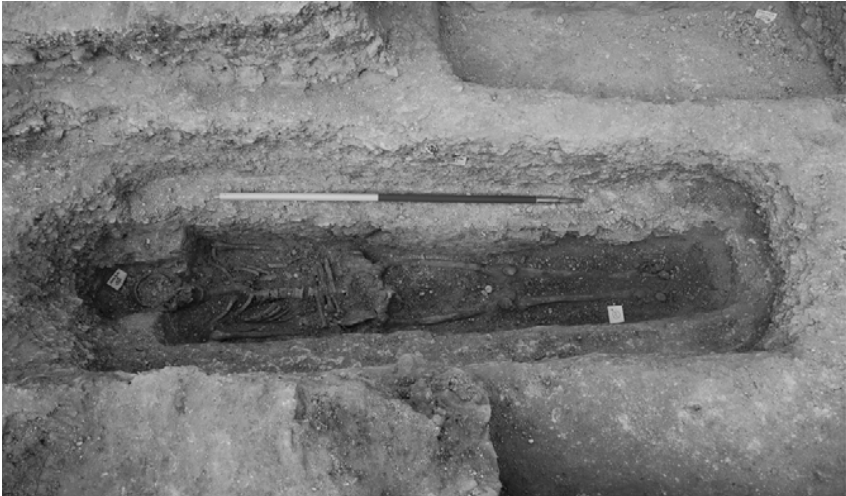St. Mary Magdalen
- Period: Medieval
- Location: UK
- Burials: 54 individuals
- Archaeologists: S. Roffey, & K. Tucker
- Related Keyword/Categories: Paleopathology, Inhumation

Roffey and Tucker (2013) examines the leper hospital of St Mary Magdalen in Winchester, UK. The site is located on the outskirts of the medieval town, a common location for these types of institutions. it was founded in the 11th century, and is first documented as a leper hospital in the mid-12th century. By the 14th century it had expanded its function and opened to other types of diseases and health concerns. A total of 54 burials were found at the site, with 49 complete inhumations and 5 scattered remains. The graves were anthropomorphic, meaning they were shaped like a general outline of the body with a large cutout for the main portion and smaller section for the skull. The study focuses on a smaller sample from the cemetery consisting of 38 individuals. These were separate from the others spatially, and date primarily from the 11th to mid-12 centuries. The other 11 complete inhumations were found within the church itself and were all older adults. They were likely patrons. The sample of 38 individuals from the external cemetery consists of 18 sub-adults and 20 adults. It is thought that these were the patients of the hospital. Of the individuals buried in the external cemetery, 84% had skeletal evidence for leprosy. In comparison with other known leper hospitals, this is an extremely high percentage. At St James and St Mary Magdalene in Chichester, 19.5% of individuals had skeletal indicators of leprosy. The site of St John Timberhill in Norwich had similar results, with 19.4% leprous individuals. There was also a much higher percentage of sub-adults with leprosy at the site under investigation in comparison with others. A potential reason for the discrepancies between sites may be that leprosy only affects bone in 3-5% of the cases. The hospital at St Mary Magdalen in Winchester may be a site where the worst cases were taken, whereas other locations accepted a full range of leprous individuals, many of which may have only shown soft tissue manifestations of the infection. However, Roffey and Tucker (2013) argue that this site was unlike many other leper hospitals in England, and was truly dedicated to leprosy. Often these hospitals would end up taking care of anyone with disfiguring diseases or other outcasts of society. However, St Mary Magdalen of Winchester may represent an actually dedicated leper hospital. Given its earlier date, this may be one of the first types of this institution, which in later variations expanded its purpose. Despite the fact that they were consigned to a life outside of the normal town, the evidence from the cemetery and site show that the lepers were not down-trodden outcasts, but rather were well-taken care of and provided proper burials. The article concludes with one warning that I find extremely interesting. Roffey and Tucker (2013) warn against the interpretation that lepers were seen as sinners and that their disease was somehow thought to be related to religious downfall. They posit that this interpretation is more likely due to Victorian biomedical and segregationist ideas than based on actual medieval experience.
References: Roffey, S., & Tucker, K. (2012). A contextual study of the medieval hospital and cemetery of St Mary Magdalen, Winchester, England International Journal of Paleopathology, 2 (4), 170-180 DOI: 10.1016/j.ijpp.2012.09.018


